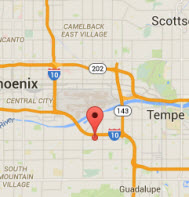Learn How To Screen Print With Catspit Productions, LLC
Screen Printing Mesh: Count Conversions, Nomenclatures & More
It is often the case that mesh count nomenclature causes confusion with people first learning to screen print. There are a few different ways of referring to mesh that are from the past or from Europe that we may see floating around the internet. As you search for information to better help you understand screen printing, these differences can be a problem. The following is an attempt to bring all of this information together for you to easily digest and refer to.
Most mesh today is monofilament, (see the end of this article for more about that). In the United States you will often see specifications for screen printing mesh that looks something like this:
355-34Y PW or 355/34
The number 355 represents the mesh count of 355 threads per inch. The number after the dash, in this case 34, refers to the thread diameter. The thread diameter, mesh count, and solid content of the ink will determine the amount of ink that passes through the mesh.
The letter Y tells us if the mesh is yellow or W for white. Those are the two most common colors of mesh.
The letters PW refers to the weave type of the mesh. PW stands for plain weave and TW stands for twill weave.
The thread diameter and mesh count together determine the mesh opening. To put it very simply, mesh opening is the spacing between adjacent threads. Mesh openings dictate the maximum particle size you can use in an ink and it affects the overall detail printed as well as the ink release characteristics. For best ink passage through any mesh count, the maximum particle size must be smaller than 1/3 of the mesh opening.
It is important to remember that mesh geometry will define the characteristics of the mesh. The mesh opening, mesh thickness and the theoretical ink volume obtainable by the mesh are all determined by mesh geometry.
Mesh geometry affects:
- Printability of fine detail, lines and halftones
- Crisp resolution of edges in the design
- Ink release properties
- Printing speed in relation to your ink viscosity
- Ink volume thickness
- Ink flow & consumption during printing
In the United Kingdom mesh is measured in threads per centimeter. There is a rule of taking the US number (inches) and divide by 2.5 to get the UK thread count conversion.
For example:
110 divided by 2.5 equals 44. This is closest to a 43T English or "European" measurement. The T is the Swiss method of telling you the thread diameter of your mesh. Usually, mills make mesh in 3 thicknesses with 3 thread diameters.
S = small thread diameter
T = medium thread diameter
HD = heavy thread diameter
S is the thinnest diameter and permits higher squeegee stroke speeds but normally requires high quality stencils. T is a medium diameter for soft hand printing as well as printing wet on wet on darks. HD is the thickest diameter of the three and requires a slower speed with a thicker stencil and a soft squeegee.
The Italian, Japanese and French don't all use the same letters. The following is a general reference chart for these conversions. Please note these charts do not take into consideration American thread diameter measurements.
US to Metric mesh count conversion: US count / Metric count:
- US Count
- 38
- 61
- 86
- 110
- 125
- 140
- 158
- Metric Count
- 15T
- 24T
- 34T
- 43T
- 49T
- 55T
- 62T
- US Count
- 196
- 230
- 255
- 280
- 305
- 355
- 380
- Metric Count
- 77T
- 90T
- 100T
- 110T
- 120T
- 140T
- 150T
Extended Inches to Centimeters Conversion Chart:
- Threads/Inch
- 25
- 37
- 54
- 63
- 85
- 96
- 110
- 123
- 137
- 156
- 173
- Threads/Centimeter
- 10
- 15
- 21
- 25
- 34
- 38
- 43
- 48
- 54
- 61
- 68
- Threads/Inch
- 195
- 206
- 230
- 254
- 280
- 305
- 330
- 355
- 381
- 409
- 457
- Threads/Centimeter
- 77
- 81
- 90
- 100
- 110
- 120
- 130
- 140
- 150
- 161
- 180
There is one more thing about mesh you should be made aware of. Most high performance mesh produced today will be monofilament. However, you may find multifilament mesh still in use or you may see the nomenclature referring to this type of mesh in print.
Monofilament polyester fabrics are made from single threads formed thick enough to be directly woven into smooth, regular fabrics. In the U.S. mesh counts are given numerically such as 110.
Multifilament polyester fabrics are made from fine polyester strands twisted together into threads and then woven into fabrics. In the U.S. mesh counts are represented by a number and text value such as 8xx.
Monofilaments are the most regular fabrics. The single strand threads are capable of great detail. They also wear well during long print runs. It is less easy to adhere films and emulsions with monofilament than with multifilament, but they are easier to clean and to reclaim and less likely to clog during printing. The surface of the threads is less coarse, or more smooth and polished.
Multifilament mesh used to be common in the textile industry. The threads are coarse and they are closest in character to the original multifilament silk fabrics used in ancient screen printing. They wear quicker than monofilaments, but they are well suited for printing on textured or contoured surfaces due to a mild elasticity which also may prevent very tight registration. Multifilament mesh will also have better adhesion qualities when using direct emulsion photo stencils or capillary film.
Extended Inches to Centimeters Conversion Chart:
Monofilament To Multifilament Mesh Count Conversion Table
This table compares the mesh count numbers used for monofilament mesh with those used for a comparable multifilament mesh.
- Polyester Monofilament*
- 60
- 70
- 80-90
- 110 - 120
- 120
- 135
- 150
- 180
- 200
- 230
- 250 - 420
- Polyester Multifilament
- 4xx
- 6xx
- 8xx
- 10xx
- 12xx
- 14xx
- 16xx
- 18xx
- 20xx
- 30xx plus
- 30xx plus


 Screenprinting Equipment From Catspit Productions
Screenprinting Equipment From Catspit Productions


